Well well well. How to write a decent introduction for this game?
Yes, that’s what you read from the title and the cover. In short, the great The Witch’s House. We cannot convince you to enter this godforsaken house as if nothing had happened, with the risk that you would not come out alive …
…
We’re so nice.
Probably in this article we will repeat ourselves a lot in the concepts, this … What can I say. It was simply a game we continue to replay, the ones we re-play more often than the classic Horror RPGs.
At the level of settings it is one of my favorites (PaoGun) while Ele tinkers with the puzzles, both immersed in the dark rooms of the house and in the right bgm of Presence of Music (practically the site if it has been stripped of everything!). A game that immediately knew how to make a good impression for its technical virtuosity and elegant style (if not as strong in graphic personality as Ib) that won the hearts of many fans of the genre that was starting to form as an RPG Horror.
A game in which it will surely have been the only case in which … Let’s get to the joke…
Yes. The only case in which the player enjoys a second run to collect all the deaths of their character!
Ahahahah, we like to joke a looot today.

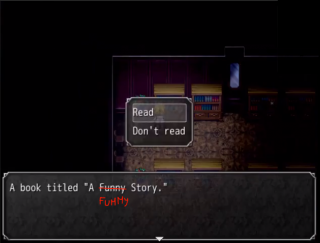
….
I always wanted to do this.
Okay now I’ll hang myse-
Product History
Alright! Here we are!
What was the distribution path of The Witch’s House? As always, Ele will unfold in the chronology of events, accompanying you this time to discover the trump card that made this game one of the most popular HOR-RPG titles!
Okay, being a classic, the release date of The Witch’s House is also very precise, and perfectly findable on any wiki: October 3, 2012.
As well as Ib, the title was released only on the official website and on one large Japanese distribution platform. In the case of The Witch’s House, that platform was “Freem!”

Nothing new: it is a platform that hosts indie games (also other titles of the HOR-RPG genre, such as Candle) as we have already seen, such as freegame-mugen.jp
From Freem! The game has obviously spread from Orient to West, earning as always many dedicated gameplay and videos on Youtube, NicoNico Douga and other sites, along with a very positive welcome in general. It is in fact considered one of the “masterpieces” in the field of games made with RPG Maker (qualitatively it is often compared to To The Moon, another pillar of the narrative title made, however, with RPG Maker XP) and a cult of the horror game in general by way of the elements that we will see in the Trump Card paragraph.
Compared to Ib, which as ancillary works had alternative versions, or limited merchandise at certain times of the year, Fummy wanted to aim higher. In addition to having a part in a kind of haunted house in Nico Nico Chokaigi Festival in 2016, with The Witch’s House we have a phenomenon that will repeat for many of the most popular HOR-RPGs that we will cover here…
The phenomenon of light novels!
Small premise: I will consider the manga and the light novel one thing in the following lines, since the manga is heavily based on the novel.
“So? Yume Nikki also had a light novel, why is this more important? “
It’s simple: this novel doesn’t just use a different medium to tell the story told in the game … But it’s a prequel to the title itself. In fact, the novel (released on October 31, 2013) is called “Ellen’s Diary”.
But despite being a slightly different case from Yume Nikki, from the point of view of the events that happen we have the same problem: it doesn’t do justice to what happened in the game. Ellen’s character has been heavily distorted, the total vibe has changed … But we will better see the results of this commercial operation in the Author-Work Relationship.
But Fummy didn’t stop there. About five years after the release of “Ellen’s Diary”, on the same day of the year, a remake of The Witch’s House, made with RPG Maker MV, was released on Steam … And with the name of someone else under Fummy’s.
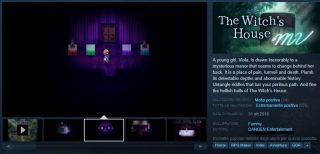

That’s right, guys, even Fummy has arrived to a publisher! Wow… We didn’t see them since Corpse Party! So in 2018 DANGEN Entertainment (also publisher of Crosscode and other indie titles) took over the remake of The Witch’s House.
As main changes we have, as you can already see from the screenshot, many modernized graphics, from the sprites to Viola and Ellen’s facesets and, much more important on a practical level, the addition of two further levels of difficulty, which can be decided before starting the game.
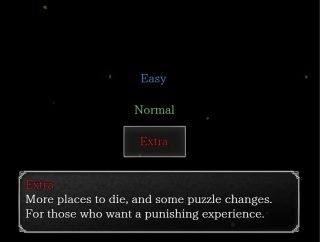
The most interesting mode is the “Extra” one, which can be obtained at the end of a game in normal difficulty (I don’t know if it is still possible to obtained if you played the “Easy” mode), where in addition to the increased difficulty there are some elements that can allude to the minimum background given from the light novel.

But, if I have to speak personally, I really appreciated one thing about this remake, which raised the Professional Meter by a few levels, which you will see later.
These changes of puzzles, and in general the elements that allude to the light novel, are only characteristic of the “Extra” difficulty of the game. If you simply want to relive the experience of the original work with elements that only improve the general aesthetic of the game, you can do it in Normal mode.
Maybe Fummy wanted to somehow keep their first work untouched, and treat the past of that distorted Ellen that he always had in mind as something additional, not as something that must be followed obligatorily (as happens with many remakes or sequels, which make additional plot elements mandatory, integrating them heavily with what was the original game, example: Corpse Party): The Witch’s House is always the cult that we met in 2012 with RPG Maker VX.
But from a more internal point of view, studying the title itself, what actually made The Witch’s House a title that not even the author theirself, if not with a whole other mode, felt they could modify?
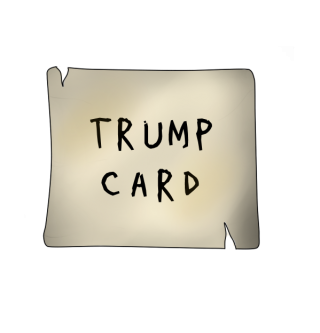
Now, therefore, we are faced with a true master who has been able to bring together two fundamental elements for a quality (video game) work: reconciliation between gameplay and narration.
We have already mentioned in the Product History the merits that have made this game so acclaimed by critics and the public: the atmospheres, the ingenious puzzles, the good use of jumpscars … In addition to the graphics that already in the original version left many “makers” and players with their mouth open because of the good use of parallaxes especially for external environments, the big quantity of animations for the sprite of the protagonist Viola…
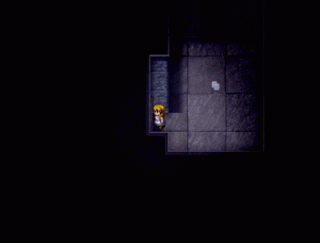
… With also added puzzles that, although not too difficult, have nice concepts behind them, together with a nice sense of contentment by the player when they solve them…
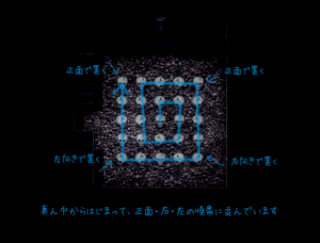
There is still one more element that has made this game a classic of the HOR-RPG, and in our opinion also in 2D horror in general: the narration-

Ah, don’t be so blind! I don’t mean this scene!
Sheesh, I didn’t even finish talking: I mean the managing of the narration until the ending.
For most of the game, we don’t have many non-system dialogs. This is a very important factor, because it makes the distribution and management of information much more successful than many fictional works in general.
Why in many of these fictional works the information given to the spectator (or player, or reader, we speak in general) are told in a “banal” way, at least for me? Here, let me explain: too many times it happens that the player (in the cases we will talk about) is flooded with information given all at once by a single cutscene with many words that come out of the mouth of the characters who, in that scene, become mere reservoirs of information: even if the player feels that they have discovered all the info on a situation, a character, etc … The aforementioned cutscene becomes heavy, difficult to follow and tiring on a psycho-perceptive level in the long run.
Here … What gives Fummy an extra point from the point of view of writing (in the original game, we have already seen what confusion he did with the light novel) is just the opposite of what I said. But let’s take some examples, it’s easier to understand this way.
As a “bad example” I took one of the most striking cases, one of the worst cases, but what I described above happens in many works not necessarily of bad quality, but which have this basic heaviness in disseminating information.
Let’s take an example of how a character’s past is described in, for example, Corpse Party (1996) and The Witch’s House.
Corpse Party’s mid-point: do you remember it?
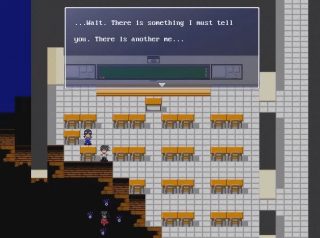
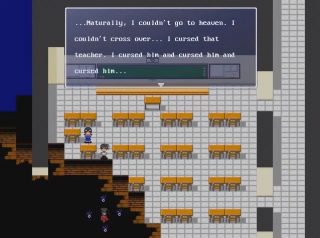


I put a few screens, to recall the article on Corpse Party, which we have already talked about here in Back to the Future, but this cutscene lasts much, much longer. Here we have the speech I mentioned above: the information is given all at once, in the worst cases without details that can allude to certain plot details or characters.
Yes, practically a certain type of wall-of-text.
But let’s see The Witch’s House now
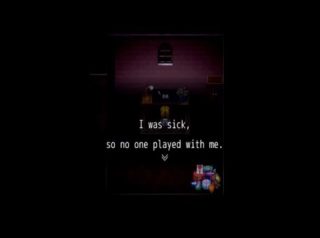

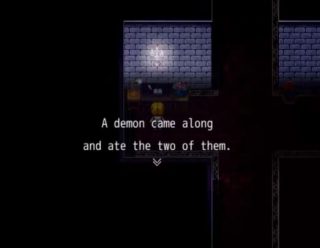
For now, we don’t care about the content of the information … But did you notice a big difference between how the story of the two girls, Sachiko and Ellen, is told? In The Witch’s House the narrative goes on in many different places. Ellen’s story goes on if the player goes on: they don’t remain glued to the space bar of the keyboard to go on in the endless dialogues of the “explain” cutscene.
The information given in this way also gives a very good curiosity effect in knowing how the witch’s story goes on. The final revelation in the Witch’s last diary is even more powerful, as you connect all the dots that were given to you throughout the whole game, for the duration of your entire experience with the game.
An unprecedented title in the field of HOR-RPG, which has been able to convey 360 ° the emotion given by dissecting a story during the playful and interactive experience as only a video game is capable of doing.
A Trump Card that we can define … Two in one.
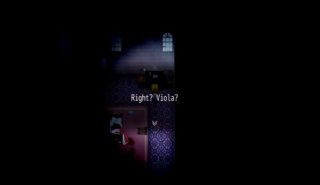
“Aahh, F*CK!”
-Average The Witch’s House player in this scene
With this reaction, the effect that information managed in this way is very evident: we finally meet this “Witch” always mentioned in the diaries, and she is also directly connected with Viola: throughout the game there is an increasing tension given by the waiting to know his identity.
Here, for this I ask all of you readers to think that the good narration of The Witch’s House is in the whole game, and not only in the final scene (because it is common thought that the story of this title focuses entirely on the final “reveal”).
In that scene, we have fallen into a much more exaggerated dramatization, which we will henceforth call “soap-opera dramatization”. Effective music, Ellen’s villain monologue …

…
“Muahahahahah”, I would add.
… My God, not even the weather is on the side of poor Viola and is the bird of ill omen saying “in this exact scene you will die among the players’ tears!”. In short, for this scene there is a “moved-or-nothing” vibe. We only should have TEARS OF PAIN.
Here, keep this type of direction in mind for the next article …
In the meantime, before moving on to the other ace to analyze, I would like to make a note.

There is a very important element to be considered within these games, which we have perhaps not explored sufficiently in the previous article: have you noticed how unlike the three games of Generation 0, enemies have a more ambiguous nature?
Not even Akemi-Tan had the same treatment for them, there was a division between “good and bad”, faction of good and evil. In Ao Oni there was a demon as a definitely negative element, Yume Nikki remember how he pushed himself more on an experimental and immersive approach without wanting to keep realistic tones in the least.
Leaving aside the case of Corpse-Party (the ’96 one, whose plot focused on spirits to be pacified, an ancient tradition of many horror works, centered on a more human sphere of characters), we can already see in Ib the difference: some works of art give you the game over, others don’t. Mary suffers from loneliness, Ellen suffers from loneliness and seems to complain of a lack of affection. Complexity grows in the gaze we have to turn to the characters: they have intentions and motivations that start from within. Human needs and needs that we spectators experience every day (desire for companionship and sociability or affection, just to make examples) but that pushes the characters to perform strongly negative (and often atrocious) actions and bad examples that they show us with a horror staging.
In particular, this growing ambiguity will also be noticed in Sen’s works, Mad Father (precisely: a murderer who wants to put himself also in the position of a parental figure) and Misao (in which we move more and more towards the ” daily normality “of the context), going from here on to articulate characterizations of increasingly complex characters up to even the pattern of the Journey of the hero in The Crooked Man and the articulated facets of the characters of Cloé’s Requiem in the generation to come. But this will be a story that we will deepen later, step by step.
Since, in this case, dwelling on the behavior of the two girls would not add anything to the analysis that you don’t already know (apart from admiring Viola’s determination and being interested in Ellen’s sociopathy) will not be The Witch’s House the game that will make us talk characterization of the characters, at least for now…
… This is because it is not a title that has only narrative. Even from the point of view of the “video game” in its most primitive sense, The Witch’s House has offered a very important element (which, alas, is missing in many HOR-RPG or pseudo-such titles of today), more pleasant to play, and you also deal more difficult. There is no question why Fummy wanted to accentuate it even more in the Steam version of the game …
The replay value..
“Replay value is a term used to evaluate a video game’s potential for the value of the game continued after its first conclusion. The factors influencing replayability are extra game characters, secrets or alternative endings ”(from Wikipedia)
I already know what you are thinking.
“But Ib also has 9 different endings!”
And you are right! Ib also has a relatively good replay value, but what makes The Witch’s House even better than Ib from this point of view are not so much the alternative endings (even if The Witch’s House has 3 of them, not counting the “_____ ending” added in version 1.07), but rather the first two things mentioned in the definition: extra and secrets.
Being the game itself not very long (average of 1 hour and a half), Fummy was able to add all sorts of secrets, details or endings that give meaning to a second, third, fourth or fifth run. Here is everything you need to “have the platinum” of The Witch’s House, discovering almost every secret.
– Get the “good” ending;
– Get the real ending;
– Get the “_____ ending”;
– Check all the books that appear gradually in the library going forward with the game, instead of continuing indefinitely from floor to floor;
– Delete the “PublicData” file from the game folder and therefore in the distraction room you can have dialogues with the black cat;
– Collect all deaths.
And also, in the MV version, finish the game in all three difficulties: Easy, medium and Extra.
In addition to this there are also many small details that perhaps in a single run a player may have certainly missed. For example, I never noticed this bottle in the medicine room.
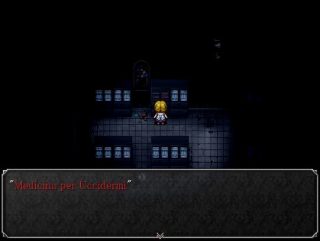
“Medicine for killing myself”
So, speaking in more practical terms, in addition to the endings there may very well be other “trophies / objectives” to be obtained during the game, and this greatly multiplies the possible runs (even if the quantity varies, it depends on what the player has missed during the first one).
In short, the numerous layers of which this title is covered (the multiple narrative levels and the multiple variations of playability) have made it iconic in itself.
Professionality Meter
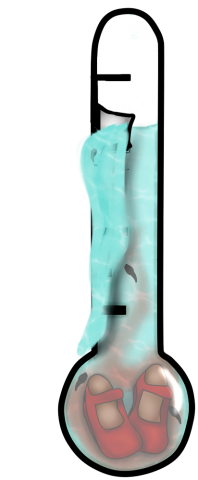
Well folks, what can I say? The thermometer here is quite high.
Of course, it’s still difficult to go back to Corpse Party’s levels … But the approach begins to be different from the other games we have faced in Back to the Future.
In reality it is a theme that we will better deal with in the Author-Work Relationship, in which we will try to better explain what happened with this title when we talk about inter-medial passage.
Packaging
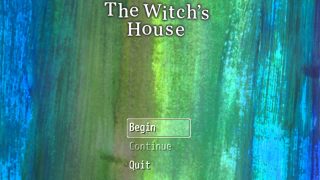
This is certainly a very unusual title screen: here we are only in front of an expanse of colors.
The shades are cold, ranging from blue to green and probably refer to isolation in nature in which the game immerses us in the first frame in which the protagonist appears.
This recurring theme with nature reminds me another cover …
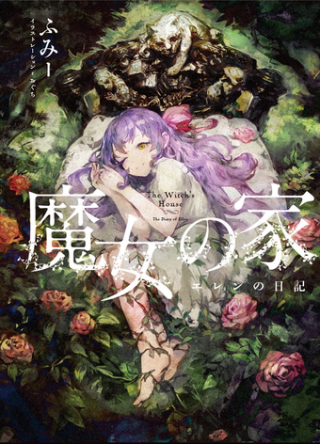
Yes. Yes, exactly.
Here, it is as if the game itself wanted to suggest a return to nature, a fairy of the woods who then became a witch: nature that from a benevolent mother “able to wrap us in a carpet of flowers” then becomes malevolent, “directing us creatures that they devour our heads in bites ”.
Mother Nature has been cruel to Ellen and her illness, her state seems to refer here almost to a natural component with herself.
As well as Viola, who lives in the woods and is represented as this daughter of a hunter, this blonde girl who ventures through unknown paths and rose bushes. A section of the game is also dedicated to the garden of the witch’s house, and in particular we can remember the riddle in which the player is forced to tear away some white talking flowers from the ground.
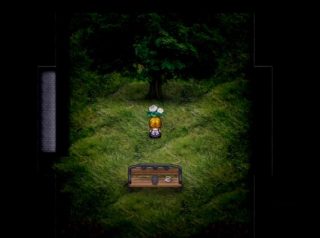
This can be an interesting field of comparison compared to the urbanized context of Ib, in which the style seems to want to approach minimalism and in some ways abstractionism (in this it shares a common point with Yume Nikki) unlike the representative context that is been chosen for this game.
After all, the menu and interface are quite simple, all our attention must be focused on the gaming experience.
The packaging therefore, and the way in which the title is presented, is one of the reasons why, although the style is recognizable, we have not yet raised the level of the thermometer a little more.
In any case, the explanations for which the water level is so high compared to the previous games we discussed are in the following paragraphs …
Author-work relationship
Okay, we finally got to this point.
To begin with, there is one thing to consider compared to the other authors we have named in Back to the Future: Fummy seems much more present and master of the work (and the franchise he tries to build).
Some will remember what we said about Makoto Kedouin in Corpse Party, or kouri in Ib, the total disappearance of Kikiyama, or even the detachment of noprops.
We are not referring only to the remake that came out for a fee and with a certain distribution operation supported by the publishers with lots of different translations (the only one perhaps in our opinion that has maintained a high quality level and has been able to properly support the comparison with the original title), but also to other ancillary works.
Yes exactly. Again, we are talking about the light novel and following the resulting manga.
“Ellen’s Diary”. The events seem to have moved to a more dramatic level (this can be seen in the decisive features of the drawing in the strongest scenes and in the light-dark tones that we preferred to adopt, my compliments to the artist) and slice of life, as saying: flashes of daily life not told in the game.
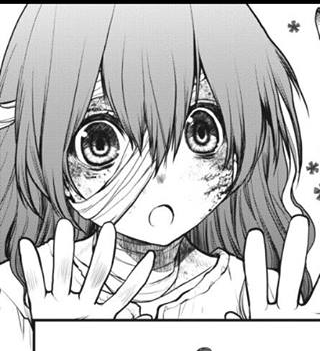
Well, yes, in short. This is the cute and cuddly vision we should have of this sicko before she sold her soul.
You can see that this “sweetening of the pill” made me really mad, eh? Yup. Nothing can be hidden from you all.
You could tell me that “it is natural that we should see her in all her innocence”, and I answer that this is not innocence but fanservice that distorts the character. Come on! A little girl who lives in conditions of misery, illness and who begins to develop an obsessive-possessive feeling towards her mother (but also just for the life condition she faces), how the heck do you catch me in this shot with rounded shapes, wide open mouth and shiny eyes for seeing a kitten? If I remember correctly, it must have been a cat while devouring a mouse. A hunting scene.
Okay, it doesn’t matter. We try to get to the heart of the matter: what we are trying to say is that, even if the tones seem to have shifted to the most dramatic and certainly less broadly communicative level (the slices of life are not exactly those types of genres that can be selling to a mass audience, especially if there is no defined plot) it is a smart move, it is an attempt to “build the franchise” to be taken into consideration.
This is what basically what “markeatable” works do. Everything is related to the loyalty that is created by the public, and it has been remarkable that it has been applied to The Witch’s House.
This is why we have been generous with the professional thermometer score. The game is clear in its intentions, it offers an immersive and interactive experience, then building from that world that created a new story, in this case Ellen’s past.
The remake I believe, seeing it in this perspective, that it was simply part of a strategy to try to refresh the title as well as a way for Fummy to test him/her self with a different engine. We appreciated the fact that in the remake there are no further insights into Ellen’s past, for us it represents a considerable seriousness towards the work.
The strategy applied by the author is remarkable, they maintained a certain detachment from the product but tries in every way to enhance its content in different forms by exploiting the intermediary through which a fictional work can be realized (you want whether it’s a light novel, manga or video game) respecting the language that these different expedients require.
Work Defects
Well, we are happy to declare that this work has no flaws!
It is from Yume Nikki’s article that we did not pronounce this satisfactory sentence.
As always, I will try to explain myself better to the most skeptical readers.
So, surely someone could notice some flaws inherent for example to the plot. Indeed, it is more than plausible that someone notices how unthinkable it was for Ellen to have been able to continue the diary even after the exchange of bodies.
You are completely right. This is a flaw.
If we want to offer justifications, it could also be assumed that there was a moment to fill in these last pages, perhaps as a testimony of the “last drop of Ellen’s sanity”, or a personal note that she made to conclude “her path as a witch”; but these are only hypotheses like others, there could be different ones and it would be a great challenge to try to cover this plot hole.
In reality there is another flaw, in my opinion even more serious.
I refer to Ellen’s statement: “the house has helped me from the beginning”.
Exactly, where would the witch’s house favor her ex-owner by letting her continue the gameplay? If the game kept us, it would have been easier to specify that the house became an obstacle because he simply hadn’t recognized it, and that was a special routine that the common victims of the witch would follow if they weren’t killed.
However … Yes. We continue undaunted to claim that “the game has no flaws!”.
This is because these are not narrative errors as serious like Ib’s errors, for which it would have served to elaborate the construction of a complete world-building. We remember the perception of the lighter and then the damage to Mary’s picture or the rule of the two people: two forgetfulness that could have (or risked) give a totally different tone to the end of the game if not to change the nature of the game itself; unlike The Witch’s House’s defects. The errors deriving from the attempt to know the logical correctness of the off-screen chronological events or from seeking an approximate justification for the events related to the individual puzzles that occur during the game are not types of defects that compromise the nature of the game.
… If I seem so understanding towards this work, it is for a specific reason.
Unlike Ib, The Witch’s House knew exactly where it wanted to go.
We are not provided with very rigid or particular types of details on the context in which the story is set, we are not given particular rules on how the house functions: the experience we went through is a videogame fairy tale.
A fairy tale that breaks the tradition of Hansel and Gretel: houses in the woods, the evil witch and the inevitable haunted house that are the protagonists of a story in which we interpret the evil character.
There is Ellen’s story that is deepened by her diaries, and this is another breaking point with the traditional fairy tales in which the characters are strongly characterized and stylized, but this does not detract from the way the girls are represented to us. Note when entering the dark corridor, for example.
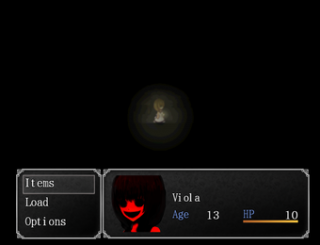
The screenshot is from the remake of the game
With all the information posthumous from the first run, what seemed at the beginning to be a normal disturbing element of the house, we can now associate it with Ellen’s connotations: red with a black grin, practically a demon. After all, “if she’s bad, it is right that she’s represented in this way”.
In addition to the dull look that can be seen from the menu interface similar to another essentially negative feature.
This game has fully centered the characteristics that define a quality game, as we said: a brisk, multi-layered narrative (remember what we said in the Trump Card on replayability) stuck properly in the tensive gameplay session, and it doesn’t separate the two elements drastically.
Having made full center for both sides, we cannot fail to praise the excellent work that has been carried out, to which added up the strategy on the “construction of the franchise” (even if it is not an operation yet completely successful, for the content of the work itself) makes it an excellent product and an interesting case of commercial experimentation.
Conclusions
We have also come to the end of this article. 2012 passes quickly, the time machine is moving at the speed of light from February to October and from October to December we come to the end of the year…
We have already noticed a difference in the way Ib and The Witch’s House approached the challenge inherent in the “storytelling” within an exploratory video game. On the one hand, a more patchy approach, while on the other we have a refinement of the method …
And not even two months later, in December, in this current it will spread a game that will boast the narration of dramatic events, told once again from the point of view of an anti-heroine.
… We are talking about the second great watershed in the history of Horror RPGs. Mad Father.

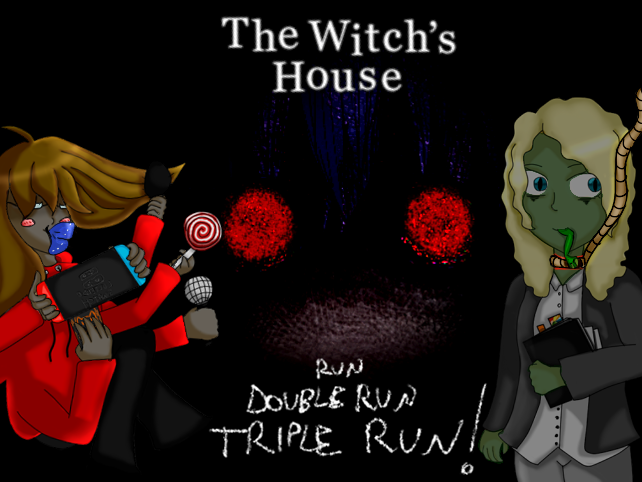
The witch house , best game ever , one of my favourite ^^ !
Absolutely yes! Accurate and elegant. 🙂
-PaoGun
But to think again , it’s so depressing to know that the sad background story of ellen is happening, right now, in real life (ofc in different form) . Not all , but , those poor kids in war zone / area with high conflict , whose is getting cureable diseases that in the name of economy and high medicine prices it become “uncureable” , left by parent that either dead , jailed, went crazy , or abandoned their children for the sake of their own personal reason. At this rate , i wouldn’t be surprised if Ellen itself become a real thing .
I understand, that’s a disturbing point of view to adopt on the subject.
Surely it should be considered that the contexts you described to me are very different from the one experienced by Ellen as an isolated case.
I can only hope that all these kids don’t find themselves forced to carry out murders like the character we’re talking about …
-PaoGun